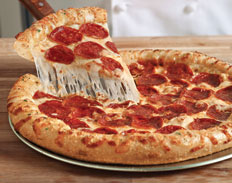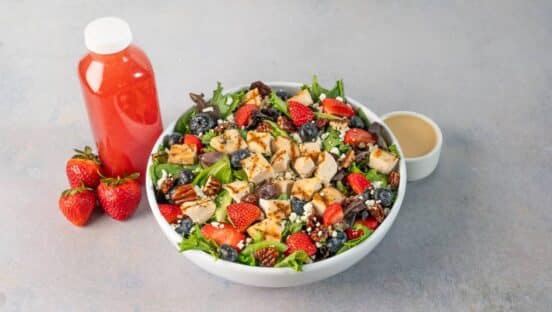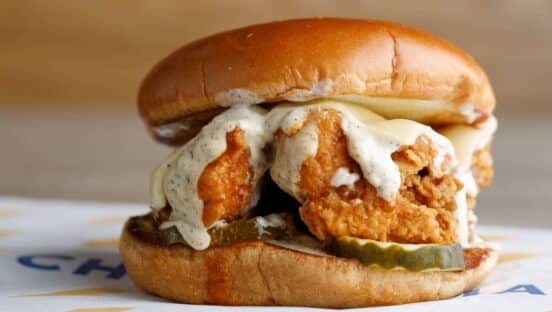Name any quick-serve giant, and a signature dish with a time-honored formula comes to mind. From McDonald’s Big Mac to Arby’s Roast Beef Sandwich, such historic menu items have defined brands for decades, catapulting both sales and brand awareness.
Since its 1960 founding, Domino’s Pizza relied on a pizza formula that delivered millions of customers and an unmistakable national presence. In December, however, the Ann Arbor, Michigan–based pizzeria announced it was dropping its 50-year-old pizza recipe and starting anew.
“We want to be the preferred pizza-delivery company for everyone, and there were places where consumers were telling us we could make the pizza better,” says Russell Weiner, Domino’s chief marketing officer.
In a 2009 consumer survey from research firm Brand Keys, Domino’s ranked first among major pizzeria chains in convenience and price, but tied for last with Chuck E. Cheese on the issue of taste. The results only confirmed Domino’s officials’ insistence that reworking the pizza recipe was a necessary move.
But the company did more than merely tweak Domino’s signature dish—it overhauled it, the marquee change in a two-year charge to revamp the company’s menu. In a move akin to McDonald’s swapping the special sauce on its Big Mac or KFC altering its original chicken recipe, Domino’s redefined its pizza with a new, garlic-seasoned crust; a sweeter, bolder tomato sauce with jolts of herbs and red pepper; and a real mozzarella cheese topping with a touch of provolone.
“This was a two-year process, as we began developing a new pizza recipe before any other menu product,” Weiner says. “We tested scores of sauces, cheeses, and crusts to get the new recipe. In the end, we’re proud of where we are right now.”
While most quick serves have introduced new products and twisted old favorites, few have ever traveled Domino’s aggressive path. After all, remaking a signature dish is risky business. Who can forget the consumer backlash Coca-Cola encountered when it altered its recipe in 1985, reverting to its original formula after less than three months on the market with New Coke?
“Changing a signature recipe is a dangerous proposition because there’s risk involved,” says Mark Smith, a research and equity analyst for investment firm Feltl and Company who focuses specifically on restaurants. “Will franchisees be on board with the change? Will this change alienate heavy users?”
Acknowledging the risk, Domino’s forged ahead.
“We were extraordinarily confident in the data we had,” Weiner says, noting that the new pizza is the most researched product in the company’s 50-year history. “We realized we could deliver a better product to the consumer, so we did it. We owed it to our customers, the shareholders, and our franchisees.”
Smith believes Domino’s risk, slightly resembling Hardee’s successful introduction of its Thickburgers as the chain sat near the bottom of taste-test favorites, was a low-risk, high-reward play.
“Domino’s was down at the bottom [of the taste rankings], so there wasn’t as much to lose,” Smith says. “The change has gotten energy around them that didn’t exist before.”
Last year, Koo Koo Roo Chicken Bistro, a chain of 13 restaurants in Southern California, employed noted chef Devin Alexander to redesign its menu, including the restaurant’s popular chicken tenders, hand-marinated rotisserie chicken, and bone-in skinless chicken breast.
“We started by simply asking: Are we as good as we can be?” senior vice president of operations Alan Watts says. “Where we saw opportunity, we proceeded with a line of questioning that got us to an actionable root that allowed us to … be in an improved and sustainable place.
“We tread lightly,” he adds, “but you always have to remain open.”
With chicken tenders, Watts says, it can be easy for a brand to be lulled to sleep by steady sales figures and to embrace complacency. Still, Koo Koo Roo leaders saw room for improvement, activating system-wide recipe changes in February.
“It is always a difficult, risky endeavor to take something people already enjoy and … walk down any road dealing with revamping,” Watts says. “You have to really do your homework and need a strong belief that you are right.”
Such logic is precisely what Domino’s embraced, aware that any consumer revolt, particularly among heavy users, could paralyze the brand.
“You don’t do this if you think; you only do this if you know,” Weiner says.
The difficulty of changing a noteworthy dish, however, is as much about pleasing customers and marketing muscle as it is about executing the change. Domino’s, for instance, has nearly 5,000 outlets in the U.S., and the pizza giant had to earn its franchisees’ support.
“I’d say I was cautiously optimistic when I first heard of the new pizza,” says Ed Treacy, a longtime Domino’s franchisee based in Maryland. “I had my concerns, but I was excited by the idea of a putting out a product that could give us a competitive advantage over our rivals.”
In preparation for the new pizza, Domino’s corporate staff explained its rationale and provided taste samples at regional meetings, involving input from the company’s supply chain, marketing team, and operations divisions. While the new pizza required no change in sauce distribution, a shift in cheese layout required retraining.
“We’ve had to get out the scales and retrain staff, but the energy over the new product has made that process a bit easier,” Treacy says.
In altering the portioning, franchisees inherit a financial risk and remain eager to see a return on their investment.
“It’s costing us more to make each pizza, so there’s a substantial investment on our part and we want to see that ROI,” Treacy says.
At Domino’s headquarters, hopes remain high. The company’s honest and open marketing campaign, trumpeted on both traditional and new media, generated a buzz and attracted attention. Long known for delivery and service, Domino’s hopes customers enjoy the revised pizza product and provide the brand an enhanced market share.
“We’re betting that taking risks, albeit calculated risks, can lead to some very positive results,” Weiner says.











